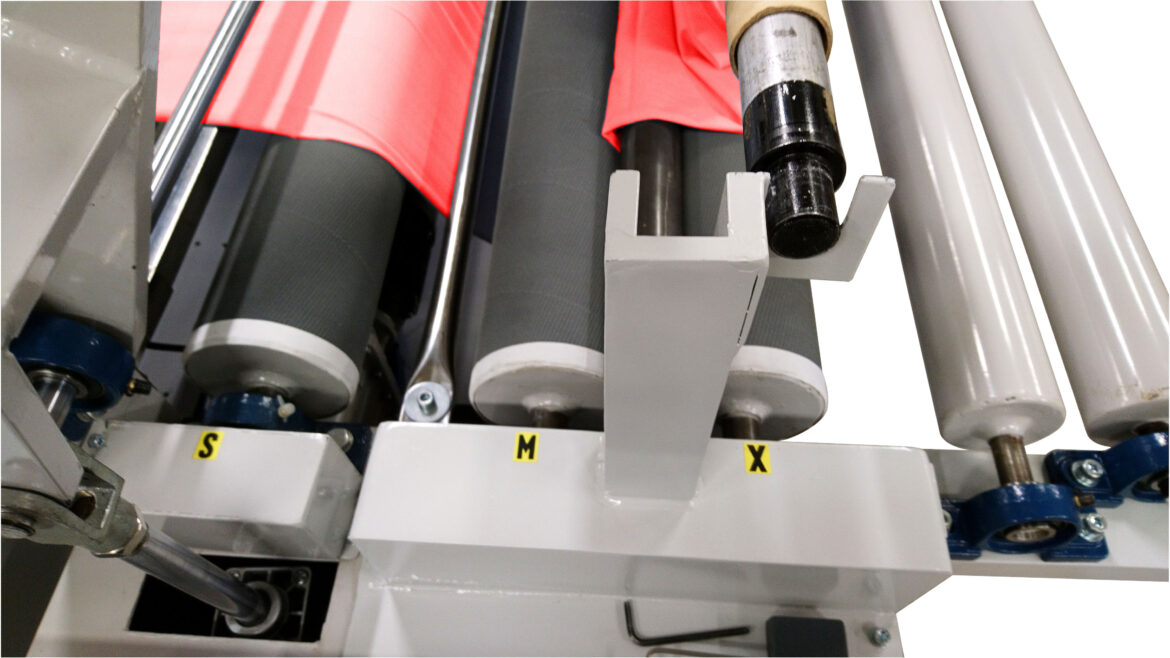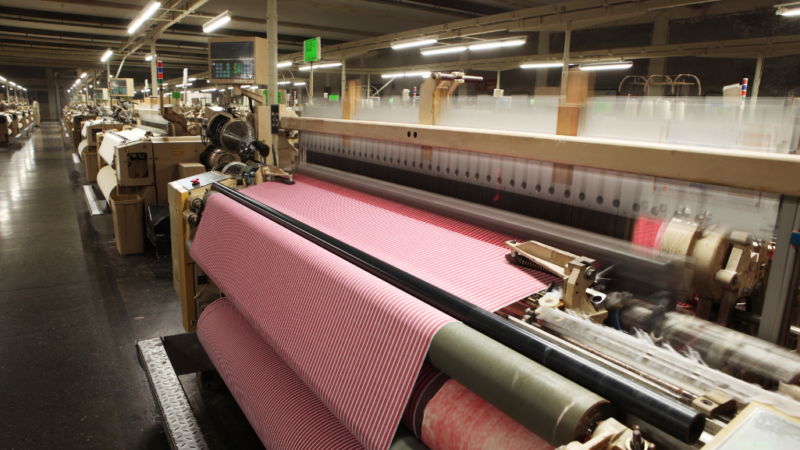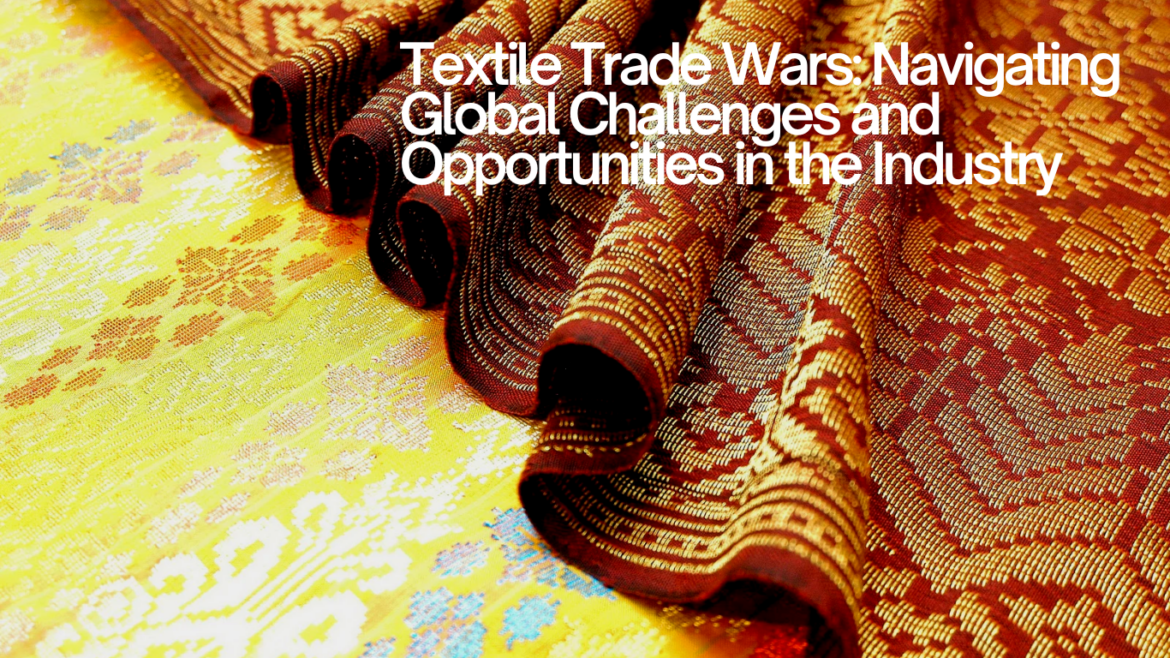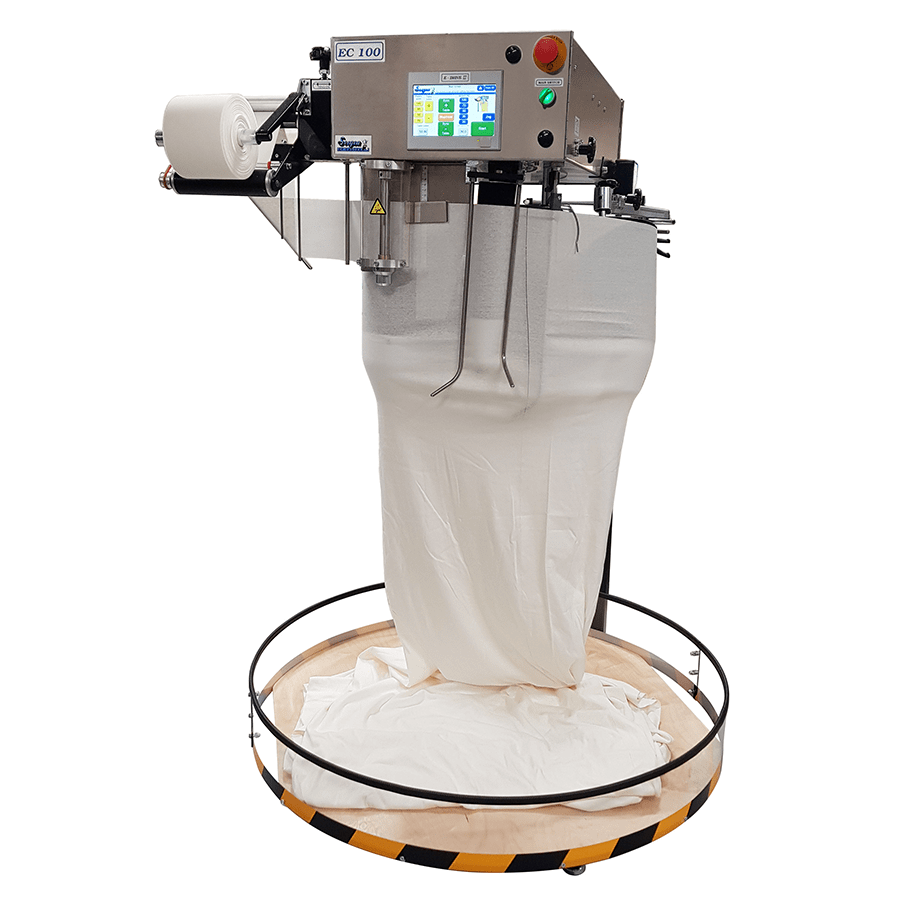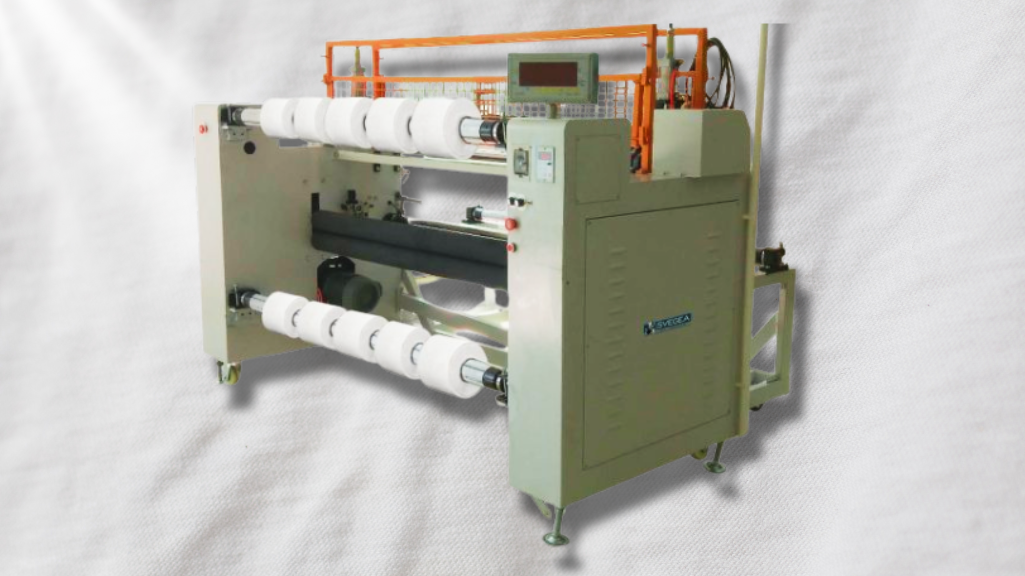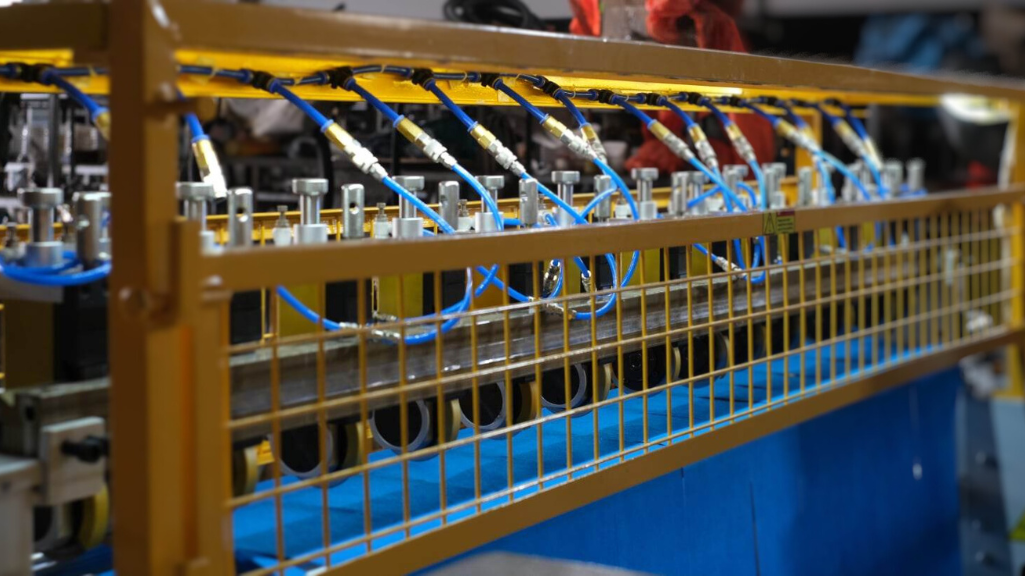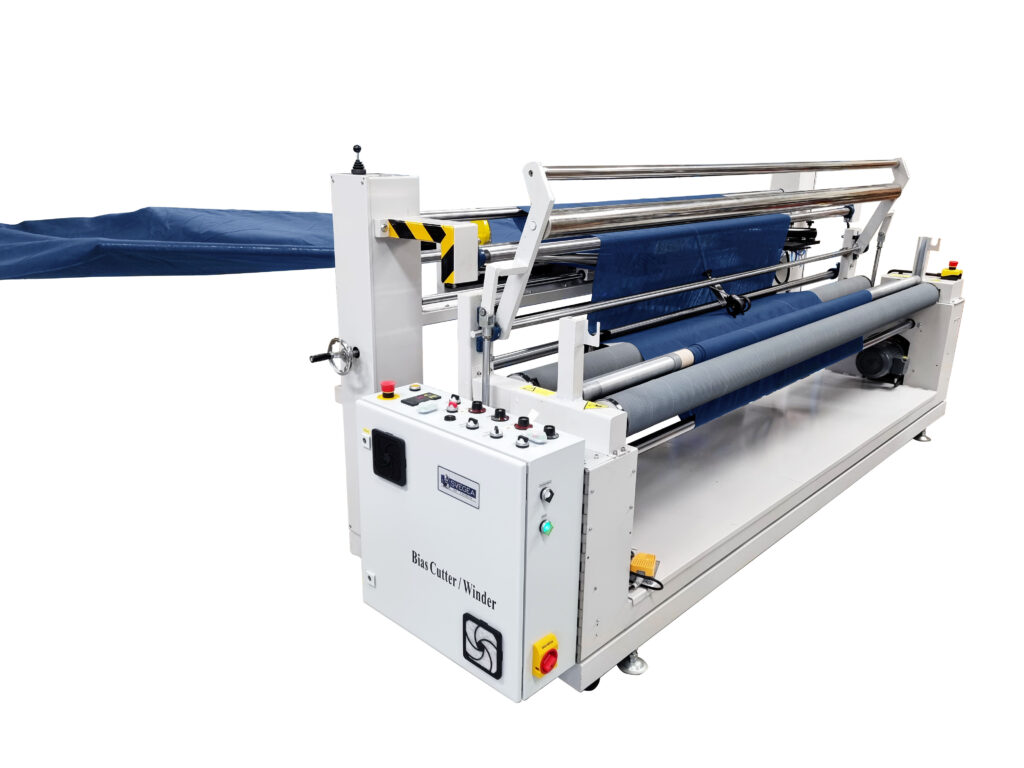In the fast-paced realm of textile manufacturing, precision and innovation reign supreme, shaping industry standards and pushing boundaries. Svegea of Sweden AB emerges as a beacon of cutting-edge technology, offering various products and services that redefine the textile landscape. A standout in their lineup is the Tubular Knit Slitter, a product that epitomizes Svegea’s commitment to excellence and efficiency in textile production.
Cutting-Edge Technology
A steadfast commitment to cutting-edge technology lies at the core of Svegea’s success. The EC-450XF Collarette Cutting System, recognized with the Texprocess Americas 2023 Innovation Award, epitomizes this dedication. This advanced system achieves unparalleled precision and efficiency, setting new benchmarks in production excellence. From automatic roll-cutting/slitting machines to the Strip Cutter CMS-1800A, Svegea’s lineup showcases technological prowess.
Global Presence and Bespoke Services
With a global presence across continents, Svegea delivers innovative solutions and bespoke services to clients worldwide. Whether it’s fabric inspection machines such as the CMI 210 R or the Complete Bias System, Svegea’s commitment to meeting client needs remains steadfast. Their tailored approach ensures that each solution addresses specific requirements, ensuring customer satisfaction and success.
Award-Winning Innovation
Svegea’s relentless pursuit of excellence has earned them recognition and accolades in the textile industry. Their award-winning innovation is evident in every product, from the Tube Sewing Unit 200 A/AF to the Euro Collarette range. This dedication to pushing boundaries positions Svegea as a leader in innovation and customer satisfaction.
Tubular Knit Slitter TSO 380
In essence, Svegea’s Tubular Knit Slitter is a remarkable machine that converts tubular knit fabric from its tube form into a single-width roll of material, ready to be slit into tape. This innovative approach brings huge fabric savings compared to the traditional method of producing two rolls of open-knit fabric from tubular knit for tape or binding production.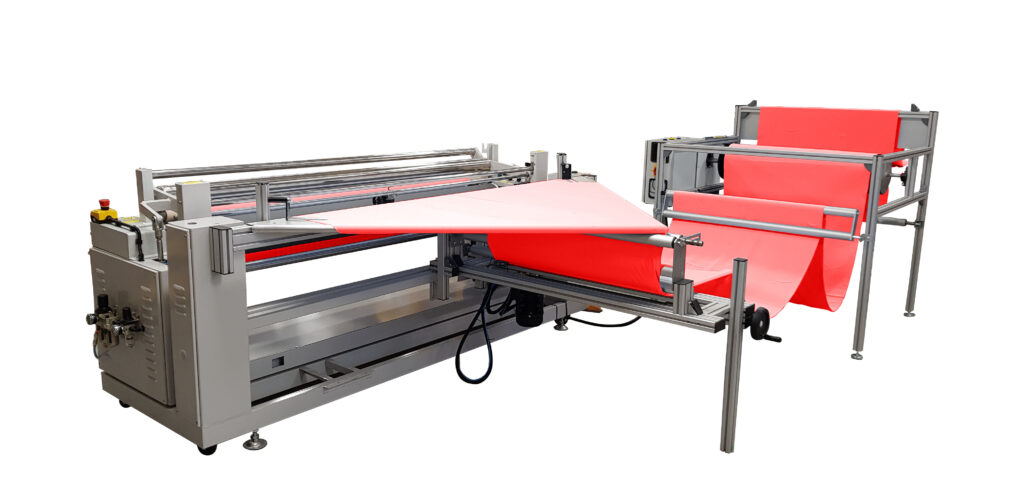
Experience Excellence
Svegea of Sweden AB stands as a testament to innovation, quality, and customer-centricity in the textile industry. They continue to redefine standards and shape the future of textile manufacturing with cutting-edge technology and a diverse product portfolio. Their global presence, bespoke services, and award-winning innovation set them apart. Experience excellence with Svegea – where innovation meets precision, and possibilities are limitless.
If you want to elevate your textile production, consider the Tubular Knit Slitter from Svegea. Let us know by pressing the contact button!
Luxury has evolved beyond mere opulence and exclusivity. It now tells the story of each design piece, highlighting meticulous craftsmanship and a commitment to ethical and sustainable practices. This article explores the world of high-end textiles, with fabric production as its cornerstone.
The Artisans and Their Craft
At the heart of luxury textiles are talented artisans. These skilled craftsmen and women create exquisite fabrics with unparalleled attention to detail. Every stitch, cut, and curve reflects their dedication, driving the continuous evolution of luxury with highly sought-after designs.
Slow Design and Bespoke Quality
Artisanal textiles are deeply rooted in craftsmanship. Unlike mass-produced goods, these items are created meticulously and thoughtfully. This movement, known as Slow Design, celebrates quality over quantity. Each piece is a unique work of art, reflecting the artisan’s expertise and passion.
The Journey from Fiber to Fabric
1. Fiber Selection: Luxury textiles begin with carefully chosen raw materials. Whether it’s silk, cashmere, or organic cotton, the quality of the fiber sets the foundation for the final product.
2. Spinning and Weaving: Artisans spin the fibers into yarns, which are then woven into fabric. Jacquard looms, guided by intricate patterns, produce complex designs that grace haute couture and high-end interiors.
3. Dyeing and Finishing: Artisans meticulously curate the color palette and apply dyes precisely. Finishing techniques—such as mercerization or calendering—enhance texture and luster.
4. Hand Embellishments: Embroidery, beading, and appliqué add a touch of luxury. Skilled hands transform plain fabric into wearable art.
The Role of Svegea of Sweden
Svegea of Sweden, a renowned textile machinery manufacturer, plays a crucial role in luxury fabric production. Their cutting-edge machines enable precise weaving, intricate patterns, and flawless finishes. From jacquard looms to automated knitting devices, Svegea’s technology empowers artisans to create fabrics that define luxury.
Subscribe to our blog for more insights into the world of luxury textiles, craftsmanship, and sustainable practices. Stay informed and inspired as we unravel the secrets behind high-end fabrics.
The textile industry, known for its dynamism and competitiveness, faces a new set of challenges in the wake of recent trade wars. In this article, we’ll explore the impact of these trade conflicts on textile businesses worldwide and discuss strategies to thrive amidst uncertainty.
The Impact of Trade Wars
Trade wars, characterized by tariff escalations and retaliatory measures, have disrupted global supply chains. Here’s how they affect the textile industry:
1. Tariffs and Costs: Increased tariffs on textile imports directly impact profit margins. Businesses must find innovative ways to absorb or mitigate these costs while remaining competitive.
2. Supply Chain Disruptions: Trade tensions create uncertainty in supply chains. Raw material availability, transportation, and production schedules are all at risk. Manufacturers need to build resilience and diversify suppliers.
3. Market Access: Some markets become less accessible due to trade restrictions. Textile exporters must explore alternative markets to sustain growth.
Opportunities Amidst Challenges
Despite the hurdles, textile businesses can seize opportunities:
1. Diversification: Exploring new markets and diversifying the customer base reduces reliance on a single market. Businesses can adapt to changing demand patterns.
2. Innovation: Research and development efforts can yield breakthroughs in materials, sustainable practices, and cost-effective solutions. Staying ahead of the curve is crucial.
3. Digitalization: Leveraging technology streamlines supply chain management, enhances marketing efforts, and facilitates e-commerce. Embracing digital tools boosts competitiveness.
Strategies for Success
To navigate these challenges effectively, textile companies should adopt the following strategies:
1. Risk Assessment: Regularly assess geopolitical risks and their impact on your business. Stay informed about policy changes and anticipate potential disruptions.
2. Supply Chain Resilience: Diversify suppliers geographically and build redundancy. Collaborate with suppliers to ensure continuity.
3. Collaboration: Partner with industry associations, government bodies, and other stakeholders. Advocate for fair trade policies and share best practices.
4. Market Intelligence: Understand consumer preferences, monitor trends, and adapt swiftly. Market research is essential for informed decision-making.
Take Action Today!
Ready to navigate the textile trade wars? Start by assessing your supply chain, exploring new markets, and embracing innovation. Remember, resilience and collaboration are key. Let’s shape the future of textiles together!
In the ever-evolving textile industry, innovation, and sustainability are paramount. One company leading the charge in this space is Svegea of Sweden. Renowned for its state-of-the-art cutting machines, Svegea combines advanced technology with eco-friendly practices to revolutionize textile manufacturing.
The Rise of Eco-Friendly Cutting Machines
As the demand for sustainable solutions in the textile industry grows, Svegea has positioned itself at the forefront. The company’s cutting machines are designed with a strong emphasis on reducing environmental impact. These machines not only enhance efficiency but also minimize waste, setting a new standard for eco-friendly manufacturing.
Svegea’s cutting machines incorporate several features that make them stand out. Firstly, they use energy-efficient motors that consume less power, resulting in lower carbon emissions. Additionally, the precision of these machines ensures that fabric waste is significantly reduced. This is a major concern in traditional textile production methods.
Innovative Technology for a Greener Future
Svegea’s commitment to sustainability goes beyond just reducing waste. Their cutting machines are equipped with advanced technology that supports the use of recycled materials. This capability is crucial for textile manufacturers aiming to meet the increasing consumer demand for eco-friendly products.
One of the key technological advancements in Svegea’s machines is the integration of AI-driven precision cutting. This technology allows for optimal use of fabric, ensuring that every inch of material is utilized effectively. By maximizing fabric use, manufacturers can significantly cut down on waste, contributing to a greener future.
Efficiency Meets Sustainability
Efficiency and sustainability are often seen as two competing goals in manufacturing. However, Svegea has successfully merged these two objectives with their cutting machines. The company’s machines are designed to deliver high-speed cutting without compromising on quality or environmental standards.
Svegea’s machines also feature user-friendly interfaces that allow operators to quickly adapt to new cutting patterns and materials. This adaptability not only enhances productivity but also reduces downtime, leading to more efficient production cycles. By streamlining operations, manufacturers can achieve higher output while maintaining sustainable practices.
Reducing Environmental Impact
The textile industry has long been criticized for its environmental footprint. Traditional cutting methods often result in significant fabric waste, contributing to landfill overflows and environmental degradation. Svegea addresses this issue head-on with their cutting-edge machines.
Svegea engineers their cutting machines to minimize fabric waste using precise cutting technology. This precision not only reduces waste but also maintains the quality of the cut pieces. By producing more usable fabric pieces per roll, Svegea helps manufacturers reduce their material costs and environmental impact.
Commitment to Continuous Improvement
A sustainability-conscious company demonstrates its dedication to innovation through its continuous efforts to improve its cutting machines. The company invests heavily in research and development to stay ahead of industry trends and meet the evolving needs of textile manufacturers.
Svegea regularly updates its machines with the latest technological advancements. This commitment to continuous improvement ensures that their cutting machines remain at the forefront of the industry. They do so while providing manufacturers with the best possible tools for sustainable production.
Customer-Centric Approach
At the heart of Svegea’s success is its customer-centric approach. The company works closely with textile manufacturers to understand their specific needs and challenges. This collaboration enables Svegea to tailor their cutting machines to meet the unique requirements of their clients.
Svegea offers comprehensive support and training to help manufacturers get the most out of their cutting machines. This support extends beyond the initial purchase, with ongoing maintenance and updates to ensure the machines continue to operate at peak efficiency. By prioritizing customer satisfaction, Svegea has built a loyal client base that values its innovative and eco-friendly solutions.
Svegea of Sweden is a pioneer in the textile industry, setting new standards with their eco-friendly cutting machines. By combining advanced technology with sustainable practices, Svegea is helping manufacturers reduce waste, improve efficiency, and meet the growing demand for environmentally responsible products. Its commitment to continuous improvement and customer satisfaction ensures that Svegea will remain a leader in the industry for years to come.
In the fast-paced world of textile manufacturing, precision and efficiency are paramount. The Roll-to-Roll Slitting Machine RRS-800 is a cutting-edge solution that meets these demands, allowing textile producers to optimize their processes and deliver high-quality products. In this article, we’ll explore the key features of this machine, its specifications, and its impact on the industry.
Key Features:
Motorized Knife with Adjustable Speed
The heart of this efficient slitting machine lies in its motorized knife. This advanced feature allows operators to control the cutting speed, ensuring precise slitting without compromising quality. Whether it’s delicate fabrics or heavy-duty materials, the RRS-800 adapts effortlessly.
Adjustable Cutting Widths
Flexibility is essential in textile production. This state-of-the-art textile machine achieves this by allowing operators to adjust cutting widths. By moving the placement of the knives, manufacturers can tailor the machine to their specific needs.
Optional Electronic Meter Counter
Keeping track of material usage is crucial for cost management. It offers an optional electronic meter counter, enabling real-time monitoring. This feature ensures efficient resource allocation and minimizes waste.
Pneumatic Lift Kit for Easy Loading and Start-Up
Loading and starting up a slitting machine can be labor-intensive. The RRS-800 streamlines this process with its pneumatic lift kit. Operators can effortlessly raise the knife shaft, reducing downtime and enhancing productivity.
Re-Rolling Efficiency
After slitting, re-rolling becomes essential. This cost-effective machine excels in this aspect by utilizing two independent air-expanding shafts. These shafts handle the re-rolling of slit rolls, ensuring uniform tension and preventing material distortion.
Three Shafts for Optimal Performance
The RRS-800 boasts a total of three shafts:
- One for the master roll
- Two for re-rolling
This configuration allows seamless transitions between processes, minimizing downtime and maximizing throughput.
Customizable Air-Shaft Sizes
Different materials require different handling. This slitting machine caters to this diversity by offering customizable air-shaft sizes upon request. Garment manufacturers can fine-tune the machine to match their specific textile types and dimensions.
The RRS-800 combines innovation, precision, and adaptability, making it a valuable asset for textile manufacturers worldwide. As the industry continues to evolve, machines like the RRS-800 are pivotal in meeting production demands while maintaining product quality.
The textile industry is undergoing a profound transformation, propelled by Artificial Intelligence (AI). Gone are the days dominated by manual labor; now, precision and efficiency reign supreme. Let’s explore the dynamic shift of AI in textile manufacturing:
1. AI Empowers Precision and Quality
AI-driven systems detect defects in fabrics, patterns, and colors before they escalate, ensuring top-notch quality and minimizing waste. These systems streamline production, guaranteeing consistency and excellence across products.
Moreover, AI algorithms analyze intricate designs with unmatched precision, ensuring every detail meets specifications. This meticulous scrutiny extends to color matching, maintaining uniformity and visual appeal throughout production.
2. The Rise of Smart Apparel
Welcome to the era of smart apparel, where AI and IoT converge to create functional and stylish clothing. Imagine garments that not only look good but also monitor vital signs seamlessly. Unlike conventional wearables, smart clothing provides continuous health monitoring for a holistic user experience.
3. Sustainable AI with Ultra-Low-Power Technologies
To harness AI sustainably, ultra-low-power (ULP) technologies are crucial. These energy-efficient solutions enable smart textiles to operate seamlessly without compromising resources. They are the backbone of a sustainable AI revolution in textile manufacturing.
Embracing a New Era
The fusion of AI and textiles heralds a new era of innovation and sustainability. It’s a future where precision, quality, and environmental consciousness drive progress. Embrace this transformative journey and stay ahead in the dynamic world of textile manufacturing.
Discover how Svegea, a leader in textile machinery from Sweden, leverages AI to revolutionize production. Their innovative solutions embrace AI’s potential, making manufacturing smarter, efficient, and eco-friendly.
Svegea of Sweden offers cutting-edge textile machinery that leverages AI to optimize production efficiency. Explore our pages more to dive into AI-driven textile solutions and be part of the transformative journey.
In recent years, the textile and clothing sector has undergone a significant transformation. The shift towards sustainability is driven by increasing awareness of environmental issues and the urgent need for change. This article explores the fascinating world of sustainable textiles, delving into eco-friendly materials, circular fashion, responsible manufacturing practices, and leading brands in the sustainable fashion movement.
Eco-Friendly Materials
The cornerstone of sustainable textiles lies in the use of eco-friendly materials. These materials not only reduce environmental impact but also offer innovative solutions for a greener future.
Organic Cotton
Organic cotton is grown without the use of synthetic pesticides or fertilizers. This method reduces soil and water contamination, promoting healthier ecosystems. Moreover, organic cotton farming practices enhance soil fertility and reduce water usage, making it a sustainable choice for textile production.
Tencel (Lyocell)
Tencel, also known as Lyocell, is a fiber derived from sustainably managed eucalyptus trees. The production process of Tencel is notable for its low environmental impact, including reduced water usage and minimal chemical input. Known for its softness and breathability, Tencel is an excellent choice for eco-conscious consumers.
Hemp
Hemp is a versatile plant that requires minimal water and no synthetic pesticides to grow. Its fibers are strong and durable, making hemp an ideal material for various textile applications. Additionally, hemp cultivation improves soil health by preventing soil erosion and enhancing soil structure.
Recycled Polyester
Recycled polyester is made from post-consumer plastic bottles. This process reduces plastic waste and conserves energy compared to producing virgin polyester. Recycled polyester offers a sustainable alternative to traditional synthetic fibers, supporting the reduction of plastic pollution.
Circular Fashion
Circular fashion is a concept that aims to create a closed-loop system in the textile industry. This approach focuses on designing products for longevity, recyclability, and minimal waste.
Closed-Loop Systems
Brands are increasingly adopting closed-loop systems, where products are designed to be easily recycled into new textiles. This approach reduces the need for virgin materials and minimizes waste. By rethinking product life cycles, companies can significantly lessen their environmental footprint.
Take-Back Programs
Many companies now offer take-back programs, encouraging customers to return old garments for recycling or repurposing. These programs extend the life of clothing items and reduce textile waste. Consumers are incentivized to participate through discounts or store credits, promoting a culture of sustainability.
Upcycling
Upcycling involves transforming discarded textiles into new, fashionable pieces. This creative approach reduces waste and adds unique value to otherwise unused materials. Designers and brands are increasingly embracing upcycling to create one-of-a-kind, eco-friendly products.
Responsible Manufacturing Practices
Sustainable textiles extend beyond materials and recycling; they encompass ethical and responsible manufacturing practices that prioritize the well-being of workers and the environment.
Fair Wages and Labor Conditions
Brands committed to sustainability ensure fair wages and safe working conditions for their employees. Ethical treatment of workers is a fundamental aspect of responsible manufacturing, promoting social justice within the industry.
Reducing Water Usage
Innovations in textile production have led to significant reductions in water usage. Techniques such as waterless dyeing and efficient washing processes help conserve this precious resource. By adopting these methods, brands can decrease their environmental impact and support sustainable water management.
Low-Impact Dyeing
The use of natural dyes or low-impact synthetic dyes is gaining traction as a sustainable alternative to traditional dyeing processes. These dyes reduce chemical pollution and lower the environmental footprint of textile production. Brands that prioritize low-impact dyeing contribute to cleaner waterways and healthier ecosystems.
Traceability and Transparency
Transparency in the supply chain allows consumers to make informed choices about the products they purchase. Brands that disclose detailed information about their sourcing, manufacturing processes, and labor practices build customer trust. Traceability ensures accountability and promotes ethical practices within the industry.
Leading Sustainable Brands
Several brands have emerged as leaders in the sustainable fashion movement. These companies set an example by prioritizing environmental and social responsibility.
1. Patagonia
Patagonia is renowned for its commitment to sustainability. The company uses recycled materials, supports fair labor practices, and promotes environmental activism. Patagonia’s dedication to transparency and ethical practices has made it a pioneer in sustainable fashion.
2. Eileen Fisher
Eileen Fisher emphasizes timeless designs, organic materials, and circular practices. The brand’s take-back program encourages customers to return old garments for recycling, promoting a circular economy. Eileen Fisher’s holistic approach to sustainability encompasses both environmental and social aspects.
3. Stella McCartney
Stella McCartney is a trailblazer in luxury sustainable fashion. The brand uses innovative materials such as vegan leather and recycled fabrics, prioritizing animal welfare and environmental impact. Stella McCartney’s designs showcase that sustainability and high fashion can coexist harmoniously.
4. Reformation
Reformation creates stylish clothing from eco-friendly fabrics. The brand’s commitment to sustainability is evident in its use of recycled materials, efficient production processes, and transparent supply chain. Reformation’s trendy designs appeal to fashion-forward consumers who prioritize sustainability.
5. Veja
Veja produces sneakers using sustainable materials such as organic cotton, wild rubber, and recycled plastic. The brand’s dedication to fair trade practices and environmental responsibility has earned it a loyal following. Veja’s innovative approach to sneaker production sets a high standard for sustainable footwear.
Not Just a Trend
Sustainable fashion is not just a trend; it is a crucial step towards a greener and more ethical industry. By embracing eco-friendly materials, circular fashion practices, and responsible manufacturing, the textile sector can significantly reduce its environmental impact. Leading brands like Patagonia, Eileen Fisher, Stella McCartney, Reformation, and Veja demonstrate that sustainability and style can go hand in hand.
Additionally, companies like Svegea of Sweden are making strides in sustainability with innovative textile machinery that supports efficient and eco-friendly production. Supporting these brands and making conscious purchasing decisions contribute to positive change in the industry.
The future of fashion lies in sustainability, and every step towards a greener wardrobe counts.
In an era where sustainability is not just a choice but a necessity, the story of sustainable natural fibers is a compelling narrative of environmental responsibility and traditional artisanship. This tale begins with the nurturing of seeds and ends with the creation of fabrics that embody both style and ecological consciousness.
The Seed of Sustainability
Every fiber’s journey starts with a seed, a sapling, or a fleece. Farmers globally cultivate plants like cotton, flax, or hemp, or rear animals for wool and silk. These sustainable natural fibers are gifts from the earth, renewable and biodegradable, contrasting sharply with synthetic fibers made from petrochemicals.
Cultivation with Care
The art of growing sustainable natural fibers involves a delicate balance between yield and environmental care. Techniques such as crop rotation, organic farming, and integrated pest management minimize ecological damage. Despite challenges like water consumption for cotton or the fragility of silk production, these practices ensure the fibers’ sustainability.
Harvesting with Heritage
Harvesting these fibers often involves age-old traditions, with methods handed down through generations. Whether it’s picking cotton, processing flax, or shearing sheep, these actions are performed with a precision that reflects a deep harmony with nature.
Spinning Stories
Post-harvest, the fibers travel to mills to be cleaned, carded and spun into yarn. This stage is where modern technology meets human expertise. Artisans and workers apply their skills to guarantee the yarn’s quality, influencing the fabric’s eventual texture and strength.
Weaving Worlds
 The yarn then transforms into fabric through weaving or knitting. This process can occur on simple handlooms in rural settings or through sophisticated machinery in modern factories. Here, the fabric acquires its unique patterns and characteristics, ready for dyeing, printing, and finishing.
The yarn then transforms into fabric through weaving or knitting. This process can occur on simple handlooms in rural settings or through sophisticated machinery in modern factories. Here, the fabric acquires its unique patterns and characteristics, ready for dyeing, printing, and finishing.
Dyeing with Diligence
The dyeing process adds color to the sustainable natural fibers, with a growing preference for eco-friendly dyes derived from plants and minerals. These methods are not only less polluting but also reconnect us with ancient, earth-friendly practices.
Fashioning Fabrics
The penultimate phase is turning the fabric into garments. Designers and tailors are crucial here, as they convert the fabric into wearable art. The slow fashion movement is fostering an appreciation for the narrative and quality behind each piece.
Challenges and Opportunities
The supply chain for sustainable natural fibers faces challenges like price volatility and competition from synthetics. However, the industry is ripe with opportunities, particularly sustainably and ethically.
The Road Ahead
As awareness grows, so does the demand for sustainable natural fibers. The industry is innovating at every supply chain level, ensuring that the path from farm to fabric remains both sustainable and enriching.
Craft Your Sustainable Legacy
For those inspired by the sustainable journey of natural fibers and seeking precision in their textile projects, Svegea of Sweden is a beacon of excellence. With over 72 years of experience in creating high-quality textile cutting systems, they epitomize the commitment to the enduring value of natural fibers. To discover how their state-of-the-art solutions can enhance the sustainability and quality of your work, visit their contact page. Together, let’s craft a future that respects our planet with every fiber.
The dynamic world of textile design and manufacturing is driven by innovation, shaping the industry’s future. From embracing sustainable practices to integrating cutting-edge technology, there’s a profound evolution underway. This shift promises enhanced efficiency and a more environmentally conscious approach to production. It’s an exciting time where creativity meets sustainability in every thread of the textile industry.
Sustainability in Textile Design:
Consumers increasingly demand eco-friendly products, prompting manufacturers to adopt sustainable practices throughout production. Svegea of Sweden, a leader in sustainable textile machinery innovations, champions sustainability with its state-of-the-art equipment designed to reduce waste and energy consumption while maintaining high-quality standards.
Digitalization and Efficiency:
The integration of digital technologies such as Artificial Intelligence (AI) and the Internet of Things (IoT) has revolutionized manufacturing processes. Svegea’s advanced machines leverage AI algorithms to optimize production efficiency, ensuring precise cuts and minimizing material wastage.
Customization for Consumer Preferences:
Customization is key as consumers increasingly desire unique and personalized products. Manufacturers are responding by offering customizable solutions tailored to consumer preferences. Svegea of Sweden collaborates with industry leaders to deliver intricate designs and patterns, meeting the growing demand for personalized textiles.
Collaborative Innovation:
Industry players are forging strategic partnerships to leverage collective expertise and resources. Svegea’s collaboration with textile industry leaders fosters innovation and knowledge exchange, driving continuous improvement in design and manufacturing processes.
Automation for Productivity:
Automated systems streamline production, reduce manual labor, and improve overall efficiency. The latest automated textile machines incorporate advanced robotics and AI, ensuring consistent quality across production batches.
Smart Textiles and Future Possibilities:
The adoption of smart textiles embedded with sensors and actuators is revolutionizing wearable technology. Innovative machines play a crucial role in producing smart textiles, paving the way for advancements in functionality and user experiences.
As we embrace sustainability, digitalization, customization, collaboration, automation, and smart textiles, the textile industry is poised for a future defined by innovation and efficiency. Explore Svegea’s innovative solutions to stay ahead in the evolving textile landscape and drive your business toward success.
In the fast-paced realm of textile manufacturing, precision isn’t just a goal—it’s an essential. Whether you’re crafting intricate patterns or tackling complex shapes, the need for clean, accurate cuts is paramount for producing top-notch textile products. That’s where band knife-cutting machines step in—a versatile solution that marries precision with adaptability, making them indispensable in the industry’s arsenal.
Decoding Band Knife-Cutting Machines
Band knife-cutting machines operate seamlessly with a continuous band blade, slicing through fabric with remarkable precision. Unlike conventional die-cutting methods, which often struggle with intricate designs, these machines excel at effortlessly cutting even the most complex shapes and patterns.
The Anatomy of Precision
At the heart of band knife-cutting machines lies a robust band blade forged from high-grade steel. This blade continuously rotates around two pulleys, meticulously tensioned to ensure optimal cutting performance. The razor-sharp edge, combined with precise computer-controlled movements, guarantees consistently clean and precise cuts with every operation.
Versatility Across Materials
A standout feature of band knife-cutting machines is their versatility across various materials. From delicate silk and chiffon to rugged canvas and denim, these machines effortlessly slice through diverse textiles. Their adaptability extends beyond fabrics, making them suitable for cutting foam, leather, cardboard, and more.
Beyond Cutting: Added Advantages
Aside from their cutting prowess, band knife-cutting machines offer several other benefits:
1. Automated Material Handling: Many models come with automated material handling systems, streamlining the cutting process and ensuring consistent quality.
2. Programmability: Manufacturers can input and modify cutting patterns easily. Quick changeovers between different designs minimize downtime, boosting overall productivity.
Staying Ahead with Innovation
As technology progresses, so do band knife-cutting machines. Newer models boast enhanced blade life, quicker cutting speeds, and heightened precision. These advancements ensure that these machines remain at the forefront of cutting-edge technology.
Precision Redefined
In the fiercely competitive textile manufacturing landscape, precision and efficiency are the cornerstones of success. Band knife-cutting machines, with their prowess in handling intricate shapes and patterns, empower producers to create top-quality products without compromising accuracy. As the industry continues to evolve, these machines are set to play a pivotal role in shaping the future of textile production.
Ready to explore the precision of band knife-cutting machines? Contact Svegea of Sweden for more details and elevate your manufacturing capabilities today!

